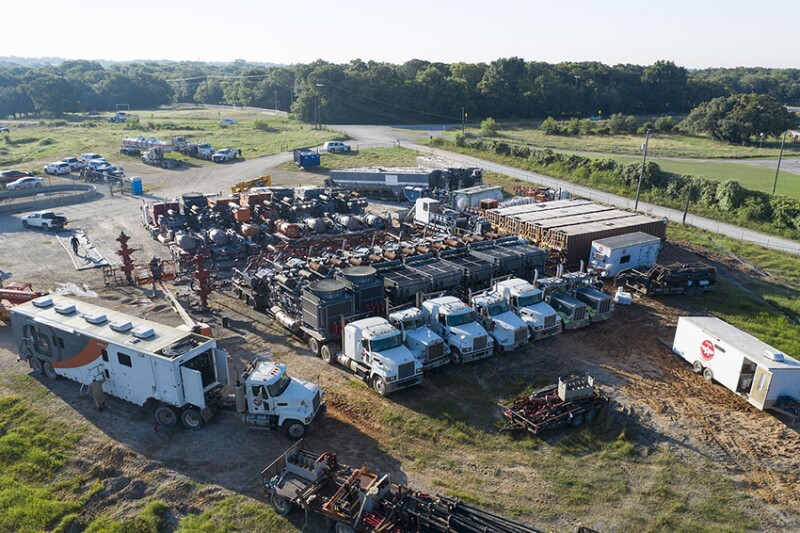Hybrid expandable liner systems and analysis fueled by machine learning (ML) are helping operators maximize production through completions.
When it comes to refracturing, it’s sometimes the case that neither a bullhead nor a liner system is optimal, Kevin Eichinger, senior completions engineer at BKV Corp., said during the 17 June panel on New Technologies and AI in Reservoir Modeling, Drilling, and Completions at the Unconventional Resources Technology Conference (URTeC) in Houston.

A well might be a candidate for refracturing because of wide cluster spacing so sections are not adequately draining, pay was passed up in the heel of the well, and other reasons. It’s common for refracturing candidate wells to have “multiple inadequacies stacked,” he said. “The more inadequate the original completion, the more opportunity there is when it’s time to refrac.”
At that time, the operator typically decides between a bullhead refracture or installing a liner, he said. Installing the liner is more expensive but results in better recovery than the bullhead option, he said.
“We can spend more and get more, or spend less and still get some, but not as much,” he said. “We wanted the best of both.”
BKV developed a hybrid expandable liner system with expandable patches and used it in a well in the Fort Worth Basin, he said. The hybrid approach lines only a portion of the well, leaving the toe side as a bullhead stage while the rest of the well is treated as plug-and-perf stages.
In the first deployment in a BKV well in the Fort Worth Basin, lining 8% of the well generated eight extra stages, Eichinger said, noting the bullhead stage added a ninth total stage within the existing lateral.
“It exceeded the fieldwide perf of fully lined wells,” he said, noting it wasn’t just a matter of getting lucky or hitting a natural fracture.
Tracers revealed that, with bullhead fracturing, the well would have significantly underperformed, he added.
Refracturing with slickwater “really unlocks the well,” he said. “Everybody talks about shales having steep declines and falling off a cliff. Maybe we just need to keep refracking ’em.”
Move Over, Type Curve
Nabiel Eldam, staff reservoir modeler and geologist at Encino Energy, said the private oil and gas producer uses an ML-based approach to evaluate completion optimization possibilities for unconventional assets.

“At Encino, we don’t use type curves. We only use Emulate,” he said, referring to the Encino Multivariable Analysis Technique, which uses geologic, reservoir engineering, and production data.
Type curves run single binary decision-tree regressions on geographic location and completion vintage variables, he said, but Encino’s ML-based approach runs more than 500 unique binary decision-tree regressions on 20–30 variables before returning the most economic results for optimized completion designs.
“It allows you to take all the data, be consistent, be completely honest with yourself, and be data-driven,” Eldam said.
He said the approach typically shows the operator which direction it needs to go. Once tested in the field, it becomes a data point integrated into the next iteration of the program.
“The more data, the better,” he said. “It works well in the unconventionals in the US where there’s lots of well data."
For Further Reading
URTeC 3855094 Hybrid Expandable Liner System: A Performance-Enhancing, Cost-Effective Alternative to Bullhead Refracturing
by Kevin Eichinger, Sam French, Ken Day, Jared Brady, and Ryan Epperson, BKV Corp.; and Richard Leonard and Brad Leonard, ProTechnics, Core Laboratories.


